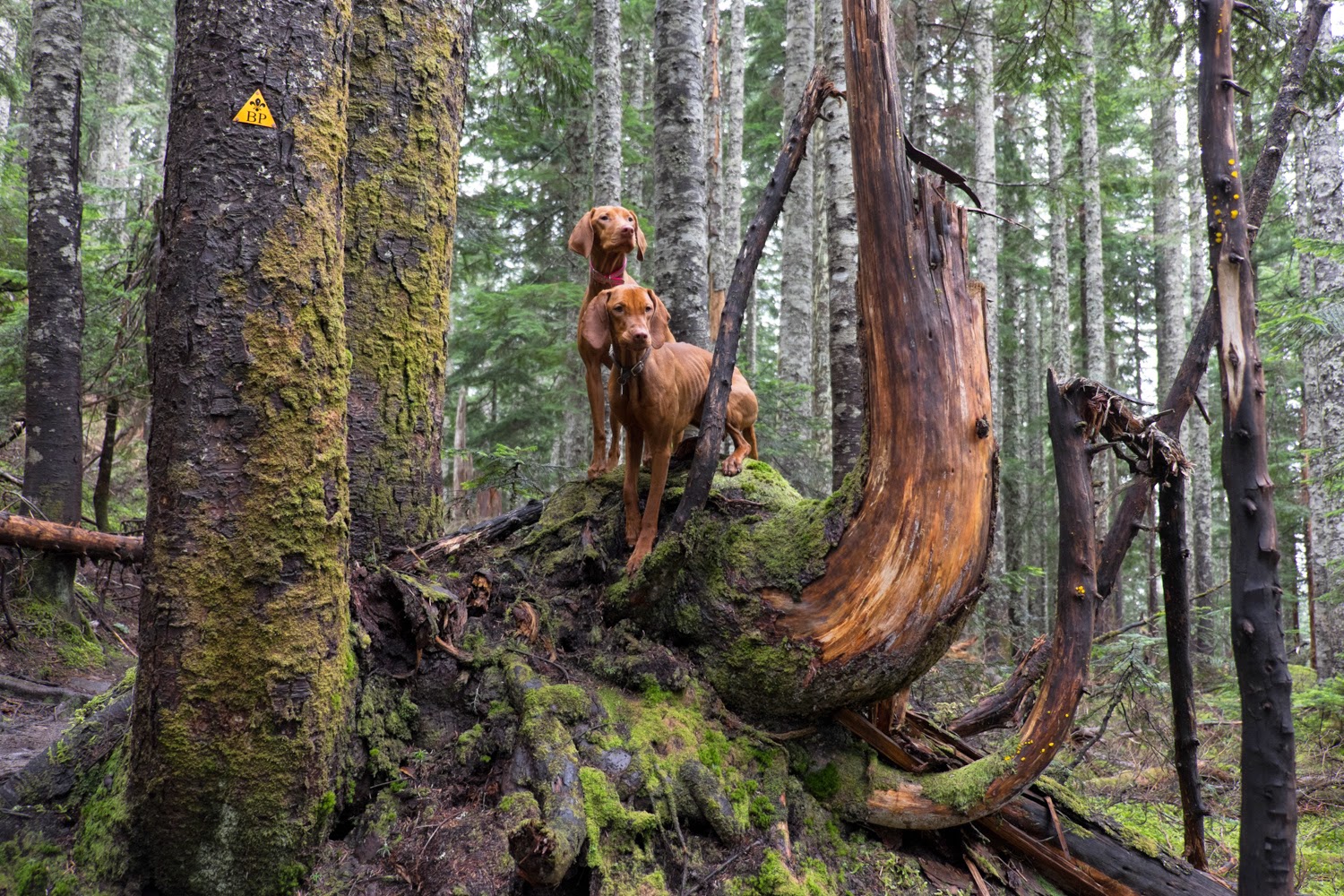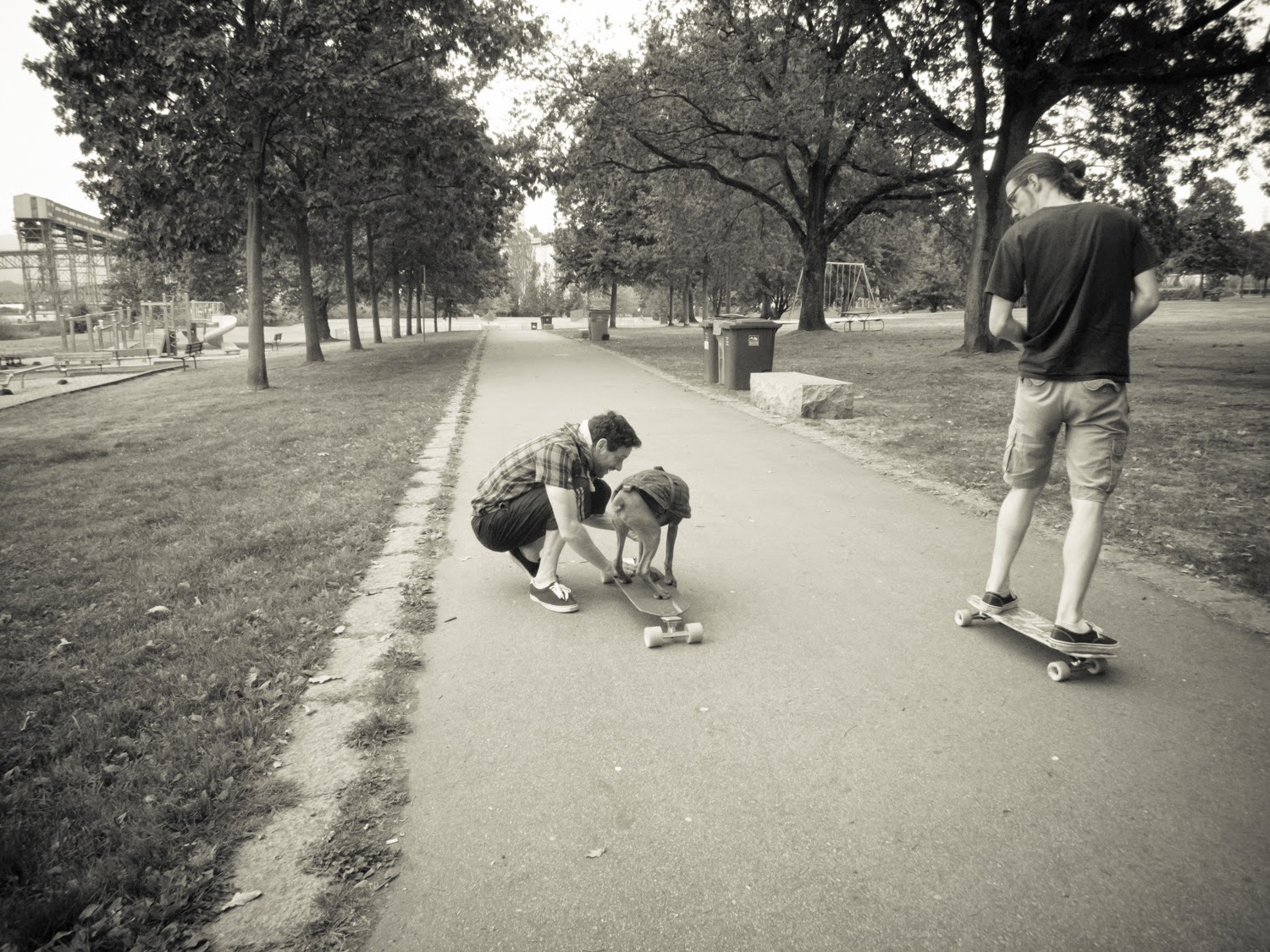Photographing dogs is like photographing babies that can run faster than a bike… It’s just not easy. We recently hiked up Eagle Bluffs again in snowy, freezing rainy, and cloudy conditions. It was cold and dark and wet but I’m really happy I still got some decent shots in. I am no expert and have tons to learn, but if you do like my photographs, here are some tips from what I’ve learned along the way:
TRAINING the dog
Train a good Sit/Stay and Stand/Stay. Your job will be 20x easier if your dog can stay for 20seconds rather than 1 second
  |
| Whiskey automatically poses for us now. Her “stays” are great for photographs |
You can train them to pose (reward only when you are happy), also train them to respond from afar (freeze from a distance, and walk a bit forward, stay again, go up on that log, look at me, etc). I use treats all the time and though I’m all for treat-less training, I find them really useful especially when you have more than one dog. You can also use them as a way to focus their attention from distractions and where to look (have an assistant hold the treats)
  |
| directing dogs for a photo is not always easy! |
When taking photos of 2 or more dogs, it’s exponentially more difficult so have patience and keep your camera ready.
  |
| Getting both dogs to look at you and stay at the same time can be difficult, especially from a distance |
TRAINING the human
Take lots of photos. This is the best advice I have! Also, LOOK at your photos, what should you do better next time? What should you repeat?
Try different angles, get down at their level, or put them up higher and take a shot from below
  |
| getting down to their level |
Always take multiples (dogs blink and pull weird faces)
Look at amazing photos and get some inspiration. I’m also on Packdog and follow some great semi-pros for ideas:
THE DOGIST
SERENAH
SETH CASTEEL
NICOLE MLAKAR
SARAH MCGRAW
PACKDOG’s WENDY DEVENT (check out other dogs here!)
Anticipate where they are going to go and set your shot up ahead of time, repeat the same photo several times if you can (get your dog to go back and forth the same path).
  |
| We saw a nice place for a photograph and set it up |
Learn to multi-task: you will need to be able to walk while looking at a lens, holding treats, checking the light, and also ensuring your dog is behaving.
  |
| multitask taking photos while walking and directing dogs |
CAMERAS
Understand your own camera- you don’t need an expensive one, though it helps but only if you have knowledge of how to use it. I would suggest to only bring one lens along because switching lenses while hiking is a hassle unless you have loads of time, and don’t mind the extra weight. We hike a lot under the forest canopy so it tends to be really dark. Mix that with the rainy days in Vancouver, plus a fast dog and most of our photos are blurry, even though we have a pretty good lens. A “sporty” camera is great – one that stands up to the elements, and especially if you are going out in the rain, the beach, and generally harsh conditions. Insurance is also great! I’m really hard with my cameras and they always need fixing.
MY GEAR:
Canon S110 (shoots RAW, great video, tiny and compact)
Canon D90 (DSLR, old model but still works fine and I don’t feel bad when it gets sandy and muddy)
Fuji X-T1 (mirrorless, newer, less heavy than D90, good in the dark, slower than D90)
I have a 35mm fixed and a general zoom lens for both cameras.
Use the light that you have. I never use flash because it ruins their eyes and I can’t imagine a dog that is ok with blinding light. If it’s very dark, I’ll make do with silhouettes. For running shots, set your camera to a fixed shutter speed (1/250 and quicker) and don’t attempt unless it’s bright enough. For shots in the rain, or dark locations, don’t shoot slower than 1/60 (for a still dog).
  |
| It’s a dark day but against snow, we get more light for faster shots |
If you don’t have a seriously quick lens, try to manually focus ahead of time and take the shot when the dog runs past that focus area.
  |
| I had to take this shot several times to get the eyes sharp enough |
Take practice shots and set up your camera BEFORE trying to photograph the dog. Their attention span is not long enough for you to get them to stay and twiddle with your camera.
POST PROCESSING
Taking the picture is half the work. There’s so much more you can do on the computer (or if you’re old-school, in the darkroom). I use Adobe Lightroom for my post processing so I can process batches of photographs with a few clicks. Normally I only spend about 2 minutes per photograph because I never have enough time in the day. I always shoot in RAW and use what room I have to fix up problems and mistakes.
  |
| the shot I took straight from the camera |
   |
| targeting the greens to be more saturated, and focused sharpening |















